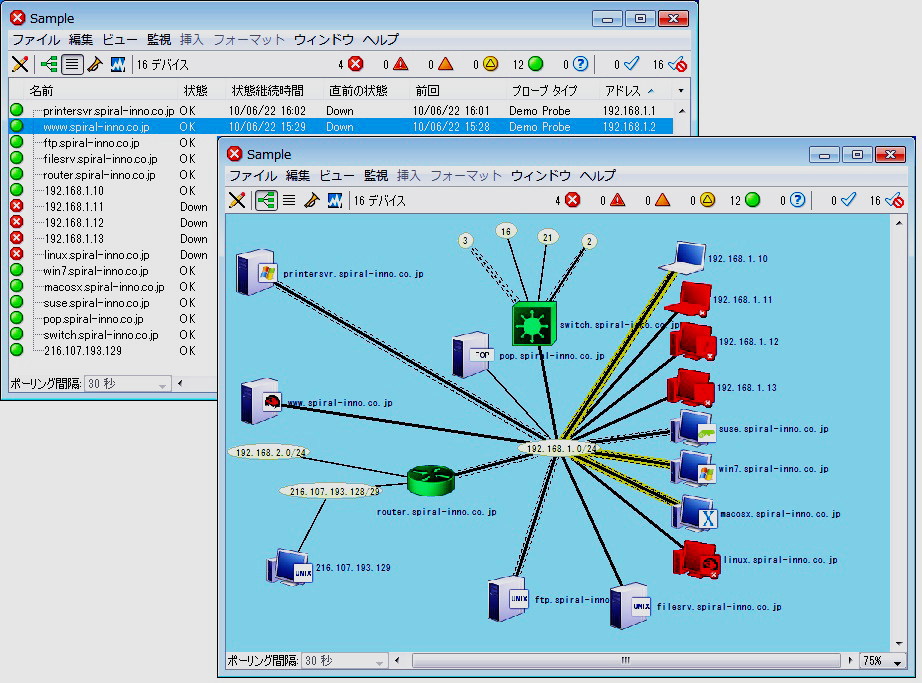
An SNMP manager that receives an inform acknowledges the To increase reliability, SNMP informs are supported When it receives a trap, and the sender cannot determine if the trap With traps, the receiver does not send any acknowledgment System logging severity levels for SNMP traps, see System Logging Severity Levels for SNMP Traps. Traps supported by the Junos OS, see Enterprise-Specific

That have enterprise-specific traps, you must obtain them from theįor more information about enterprise-specific
#INTERMAPPER CLIENT DOWNLOAD#
You can also download the standard traps from the IETF website, For more information about standard traps supportedīy the Junos OS, see Standard SNMP Traps Supported on Devices Running Junos OS.Įnterprise-specific traps are developed and supported The standard traps are compiled into the network management Standard traps are created by the IETF and documented in various SNMP traps are defined in either standard or enterprise-specific SNMP informs are confirmed notifications. Notifications can be sent as traps or inform requests. Routers can send notifications to SNMP managers when significantĮvents occur on a network device, most often errors or failures. To notify the manager of significant events that occur on the network Value of a MIB object controlled by the agent the agent indicates The agent returns the information in a Get response message. Get, GetBulk, and GetNext requests-The manager requests information from the agent As a result, SNMP communitiesĪre traditionally referred to as strings.Ĭommunication between the agent and the manager occurs in one Many people associate SNMP community strings with passwordsĪnd keys because the jobs they do are similar. IfĪ manager and an agent share the same community, they can talk to (and the agents running on them) into common management domains. Strings are administrative names used to group collections of devices Strings to control access between a manager and remote agents. SNMP uses a very basic form of authentication called community SNMP Manager and Agent Authentication and Communication Supported MIBs, see Enterprise-Specific SNMP MIBs Supported by Junos Manufacturer and compile them into your network management software.įor a list of Juniper Networks enterprise-specific That have enterprise-specific MIBs, you must obtain them from the The IETF website, and compile them into your NMS, if necessary.įor a list of standard supported MIBs, see Standard SNMP MIBs Supported by Junos OS.Įnterprise-specific MIBs are developed and supportedīy a specific equipment manufacturer. You can also download the standard MIBs from Depending on the vendor, many standard MIBs are delivered Standard MIBsĪre created by the Internet Engineering Task Force (IETF) and documented MIBs are either standard or enterprise-specific. Represents a resource, event, or activity that occurs in your network In the tree structure is the actual managed object instance, which With an object identifier (OID), which names the object. The MIB structure is based on a tree structure and defines a Known as a management information base (MIB). SNMP data is stored in a highly structured, hierarchical format


Resides on the managed device and communicates with the NMS. SNMP agent-The SNMP agent is the SNMP process that RoutersĪnd switches are common examples of managed devices. Managed device-A managed device (also called a networkĮlement) is any device on a network that is managed by the NMS. Your network how ever often you specify for information about network
#INTERMAPPER CLIENT SOFTWARE#
Hardware (devices) and software (the SNMP manager) that is used to Network management system (NMS)-A combination of A typical SNMP implementation includes three components:


 0 kommentar(er)
0 kommentar(er)
